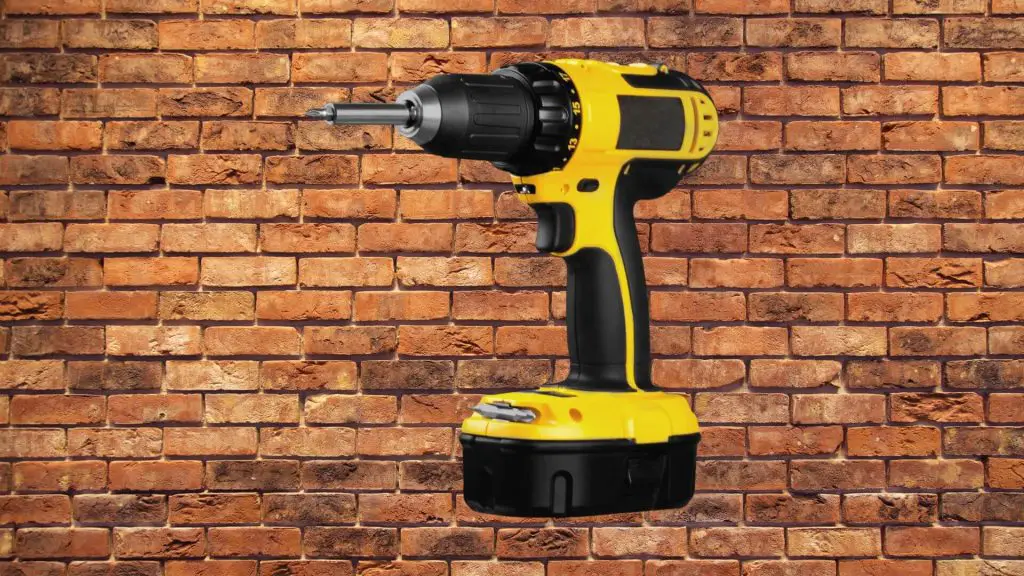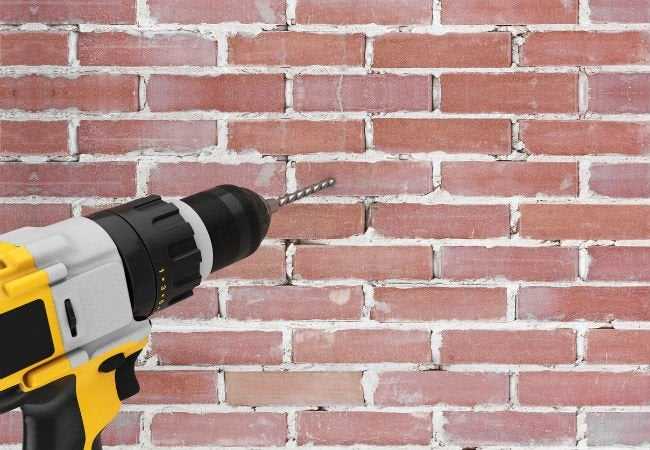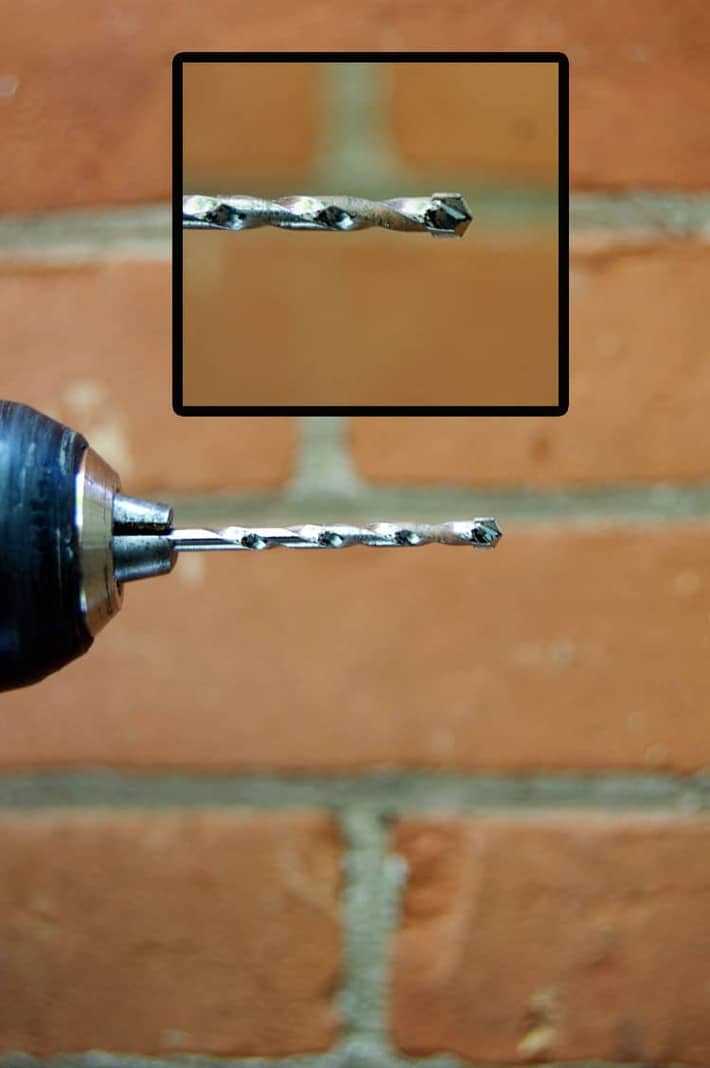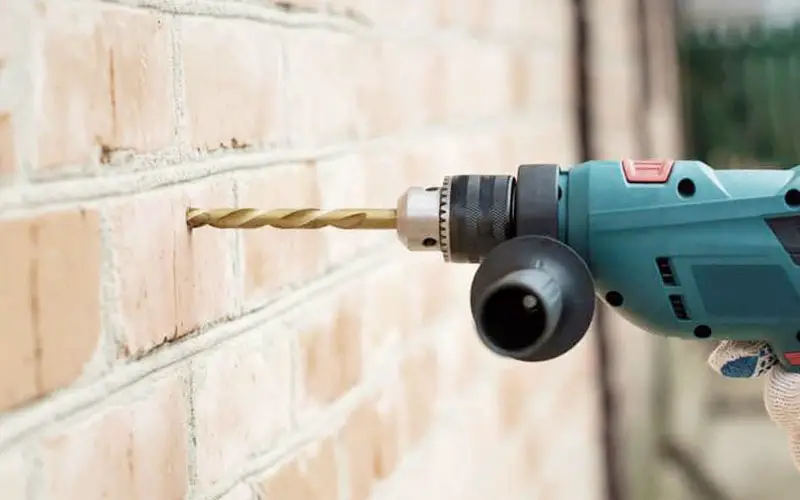Best Practices for Drilling into Brick Without Cracking It

Drilling into brick can be a tricky task, as the hard material can easily crack if proper techniques are not used. Whether you are hanging a picture or installing a shelf, it is important to follow a few best practices to ensure success and avoid any damage to the brick.
One of the key tips for drilling into brick is to use a masonry drill bit specifically designed for this type of material. These bits are made with a carbide tip that can easily cut through the hard surface of the brick. When selecting a drill bit, make sure to choose the appropriate size for the hole you need to create.
Another important factor to consider is the drill speed. It is recommended to use a low-speed setting to avoid putting too much pressure on the brick and causing cracks. Applying steady and even pressure while drilling is also crucial to prevent any damage.
Before drilling, it is essential to mark the spot where you want to create the hole. Use a pencil or a level to ensure accuracy. It is also a good idea to start with a pilot hole, which will help guide the larger drill bit and reduce the risk of cracking.
Lastly, it is important to wear protective gear, such as safety goggles and gloves, when drilling into brick. This will protect you from any flying debris and ensure your safety during the process.
By following these best practices, you can successfully drill into brick without cracking it. Remember to use the correct drill bit, control the speed and pressure, mark the spot accurately, and wear protective gear. With these precautions, you will be able to complete your drilling project with ease.
Understanding the Importance of Drilling into Brick
Drilling into brick can be a necessary task for a variety of projects, such as installing shelves, hanging artwork, or mounting fixtures. However, it is crucial to approach this task with proper knowledge and techniques to avoid cracking or damaging the brick. Understanding the importance of drilling into brick can help ensure successful and long-lasting results.
Selecting the Right Drill Bit

- Before starting the drilling process, it is essential to choose the right drill bit. A masonry drill bit is specifically designed to handle the hardness of brick, concrete, or stone surfaces.
- Avoid using regular drill bits or those meant for softer materials, as they may not be able to penetrate the brick effectively and can cause damage.
- Ensure that the drill bit you choose is compatible with your drill and the size of the hole you need to create.
Using Proper Technique
- When drilling into brick, it is crucial to maintain a steady hand and apply consistent pressure.
- Start with a slow drilling speed and gradually increase it as you progress through the brick.
- Applying excessive force or drilling too fast can lead to cracks or chips in the brick.
- Keep the drill level and perpendicular to the surface to ensure straight and accurate holes.
- Using a water spray bottle to mist the drilling area can help keep the brick cool and prevent excessive heat buildup.
Protective Measures
When drilling into brick, it is essential to take certain protective measures to minimize the risk of damage.
- Wearing safety goggles and gloves can protect your eyes and hands from debris and dust.
- Placing a drop cloth or plastic sheet underneath the drilling area can help catch any falling debris and prevent it from damaging the surrounding area.
- Using masking tape to create a drilling guide or mark the spot can help ensure accurate hole placement.
- Having a vacuum cleaner or brush nearby can help clean up any loose brick dust during and after the drilling process.
Seeking Professional Assistance
If you are unsure about your drilling skills or the project requires a high level of precision, it may be best to seek professional assistance.
A professional with experience in drilling into brick can ensure that the task is completed safely and effectively, minimizing the risk of damage or cracks.
| Summary |
|---|
|
Drilling into brick requires careful consideration and adherence to proper techniques. Selecting the right drill bit, using the correct drilling technique, and taking protective measures are crucial to avoid cracking or damaging the brick. If in doubt, it is always best to seek professional assistance. |
Choosing the Right Tools for the Job
When it comes to drilling into brick without cracking it, having the right tools can make all the difference. Here are some tools that you should consider using:
1. Masonry Drill Bit
A masonry drill bit is specifically designed for drilling into hard materials like brick. These bits are made with a carbide tip that can handle the resistance and heat generated when drilling into brick. Make sure to choose a drill bit that is the appropriate size for the hole you need to create.
2. Hammer Drill
A hammer drill is a power tool that combines the rotating action of a drill with a hammering motion. This hammering action helps to break up the brick material as you drill, making it easier to create a hole without cracking. Using a hammer drill will also reduce the amount of force you need to apply, making the process more efficient.
3. Dust Extraction System
Drilling into brick can create a lot of dust, which can be harmful to your health if inhaled. Using a dust extraction system, such as a vacuum attachment, can help to minimize the amount of dust that is released into the air. This will not only protect your health but also make it easier to see what you’re doing while drilling.
4. Level and Measuring Tape
Before drilling into brick, it’s important to ensure that your holes are level and in the right position. A level and measuring tape will help you mark the correct spots and make sure that your holes are straight and evenly spaced. This will prevent unnecessary cracking and ensure that your project looks professional.
5. Safety Gear
Lastly, don’t forget to protect yourself while working with power tools. Wear safety glasses to shield your eyes from potential debris and use ear protection if you’re using a particularly loud drill. Additionally, consider wearing gloves and a dust mask to further protect your hands and respiratory system.
By using the right tools and taking the necessary safety precautions, you can drill into brick without cracking it. Remember to take your time and apply steady pressure, letting the tools do the work for you. Happy drilling!
Preparing the Brick Surface

Cleaning the surface

Before drilling into a brick, it’s important to make sure the surface is clean and free of any debris. Use a wire brush or a stiff bristle brush to scrub the brick and remove any dirt, dust, or loose particles. This will help ensure a clean and secure drilling surface.
Locating the drilling point
Before you start drilling, it’s important to determine the exact location where you want to drill the hole. Measure and mark the spot with a pencil or marker. Take into consideration the purpose of the hole and any structural elements of the brick wall that may limit your options. Make sure to choose a spot that is safe and appropriate for the task at hand.
Creating a guide hole
To help prevent the drill bit from wandering or slipping, it’s a good idea to start with a smaller pilot hole. Use a masonry bit that is slightly smaller than the final hole size and gently drill into the marked spot. This will serve as a guide hole for the larger drill bit and help ensure greater accuracy.
Securing the brick
To minimize the risk of cracking the brick, it’s important to provide support and stability during the drilling process. Use clamps or a vice grip to secure the brick in place. This will help absorb some of the vibration and prevent the brick from moving or shifting while drilling.
Using proper drilling technique
When drilling into brick, it’s crucial to use the correct technique to avoid cracking. Start drilling at a slow speed and gradually increase the speed as you go. Apply steady pressure and let the drill do the work. Avoid excessive force or pushing, as this can put unnecessary strain on the brick and increase the risk of cracking. Use a consistent, straight motion and avoid tilting or angling the drill to maintain precision.
| Tip 1: | Use a masonry bit designed for drilling into brick or concrete. |
| Tip 2: | Periodically pause and clean the drill bit to remove any accumulated debris. |
| Tip 3: | Drill at a slow and consistent speed to prevent excessive heat buildup. |
| Tip 4: | Consider using a drill with a hammer function for tougher bricks. |
| Tip 5: | Wear safety goggles and gloves to protect yourself while drilling. |
Marking the Drilling Points

Before you start drilling into the brick, it’s crucial to mark the drilling points accurately. This will help ensure that the holes are drilled in the right places and prevent any unnecessary cracking or damaging of the brick.
Here are some best practices for marking the drilling points:
- Use a pencil: Start by using a pencil to mark the desired drilling locations on the brick. The pencil mark should be visible but not too dark, as it can be difficult to remove if mistakes are made.
- Measure twice: Take accurate measurements and double-check them before marking the drilling points on the brick. This will help ensure that the holes are positioned correctly.
- Use a level: To ensure that the drilling points are level, use a level tool. Place the level vertically or horizontally against the marked points and adjust as needed until the bubble is centered.
- Consider the weight: If you are drilling holes to hang something on the wall, consider the weight of the object. Mark the drilling points accordingly, making sure they are spaced evenly and can support the weight without causing damage to the brick.
- Create a template: For multiple drilling points, create a template using cardboard or paper. Cut out holes in the template that match the desired drilling locations. Place the template against the brick and mark the holes through the openings in the template.
By following these best practices for marking the drilling points, you’ll increase the chances of a successful drilling process without cracking or damaging the brick.
Using the Correct Drill Bit
When drilling into brick, it is crucial to use the correct drill bit to minimize the risk of cracking the material. The type of drill bit you need will depend on the type of brick you are working with and the size of the hole you want to create.
Type of Drill Bit

For most brick drilling applications, a masonry drill bit is the best option. These drill bits are specifically designed to penetrate hard materials like bricks, concrete, and stone. The carbide or diamond tips on these bits are able to withstand the high heat and friction generated during drilling, reducing the chance of cracking the brick.
It is important to note that regular drill bits, such as those used for drilling into wood or metal, are not suitable for drilling into brick. Using the wrong type of drill bit can lead to excessive heat and pressure, potentially causing the brick to crack.
Size of Drill Bit
The size of the drill bit you choose will depend on the size of the hole you need to create. It is important to select a drill bit that matches the diameter of the anchor or fastener you plan to use. Depending on the project, you may need to create different-sized holes in the brick. In this case, it is advisable to start with a smaller drill bit and gradually increase the size until you reach the desired diameter.
It is worth mentioning that using a drill bit that is too large for the anchor or fastener can weaken the structural integrity of the brick, increasing the risk of cracking.
Proper Technique
Using the correct drill bit is essential, but it is also important to follow the proper drilling technique to minimize the risk of cracking the brick. Here are some tips:
- Start drilling at a low speed to prevent the drill bit from slipping and causing damage to the brick.
- Apply steady, even pressure while drilling to avoid putting too much force on the brick.
- Use a coolant or lubricant to reduce heat and friction during drilling, which can help prevent cracking.
- Periodically pause while drilling to allow the bit to cool down.
- Do not apply excessive force if you encounter resistance while drilling. This could be a sign that you are hitting a hard spot or a mortar joint. Adjust your drilling technique accordingly.
By using the correct drill bit and following the proper drilling technique, you can successfully drill into brick without cracking it. Taking these precautions will help ensure a clean and secure installation.
Drilling Techniques to Prevent Cracking
When drilling into brick, it is important to use the proper techniques to prevent cracking. Here are some best practices to follow:
- Use a Masonry Bit: When drilling into brick, you should always use a masonry bit. These bits are designed specifically for drilling into hard materials like brick and will help prevent cracking.
- Start Slowly: It is important to start drilling slowly to allow the bit to penetrate the brick evenly. Starting at full speed can cause the brick to crack.
- Apply Steady Pressure: Apply steady pressure to the drill as you are drilling. This will help prevent the brick from cracking due to the force of the drill.
- Use a Lower Drill Speed: Using a lower drill speed can also help prevent cracking. Higher drill speeds generate more heat, which can cause the brick to crack.
- Use Water as Lubricant: Using water as a lubricant can help keep the drill bit cool and prevent cracking. Simply wet the area you are drilling before starting and periodically wet the area as you drill.
- Drill at an Angle: Drilling at a slight angle can help prevent cracking. This reduces the amount of force applied to the brick and makes it less likely to crack.
- Use a Depth Stop: A depth stop can help ensure that you do not drill too deeply into the brick, which could cause it to crack. Set the depth stop to the desired drilling depth before starting.
By following these drilling techniques, you can minimize the risk of cracking when drilling into brick. Remember to always wear safety glasses and take your time to ensure a successful and crack-free drilling experience.
Additional Tips for Successful Brick Drilling
1. Use a Carbide Masonry Drill Bit
When drilling into brick, it is important to use a high-quality carbide masonry drill bit. These drill bits are specifically designed to withstand the hardness of brick without becoming dull or overheating. Look for a drill bit with a carbide tip, as this will provide better drilling performance and durability.
2. Apply Moderate Pressure
When drilling into brick, it is important to apply moderate pressure to avoid cracking or damaging the brick. Too much pressure can cause the brick to crack or break, while too little pressure may result in inefficient drilling. Find the right balance by applying firm, but not excessive, pressure while drilling.
3. Start with a Small Pilot Hole
Before drilling a larger hole, it is recommended to start with a small pilot hole. This helps to guide the larger drill bit and reduce the chances of the brick cracking or chipping. Use a smaller drill bit (around 1/8 inch) to create a starter hole and then gradually increase the size as needed.
4. Use Water for Cooling
Brick can generate a significant amount of heat when being drilled, which can cause the drill bit to become dull or even break. To avoid this, it is helpful to use water for cooling. Simply dip the drill bit into water every few seconds while drilling to keep it cool and prevent overheating.
5. Clean the Dust Regularly
Drilling into brick can create a large amount of dust, which can hinder the drilling process and obscure your visibility. To keep the drilling area clean and clear, regularly clean the dust away using a brush or vacuum. This will ensure better visibility and prevent the dust from inhibiting the drilling process.
- 6. Choose the Right Drill Speed
- 7. Use a Masonry Anchor for Secure Fastening
- 8. Wear Proper Safety Gear
When drilling into brick, it is important to choose the right drill speed. Too high of a speed can cause the drill bit to overheat, while too low of a speed may result in inefficient drilling. Start with a slower speed and gradually increase as needed, while always being mindful of the heat generated.
If you are drilling into brick to fasten something, such as a shelf or bracket, consider using a masonry anchor for extra stability. A masonry anchor provides a secure attachment point and helps distribute the weight more evenly, preventing the brick from cracking or breaking under the load.
When drilling into brick, it is essential to wear proper safety gear. Safety goggles protect your eyes from flying debris, while a dust mask prevents you from inhaling the brick dust. Additionally, wearing gloves can provide better grip on the drill and protect your hands from cuts or scrapes.
FAQ:
What kind of drill bit should I use when drilling into brick?
When drilling into brick, it’s important to use a masonry drill bit that is specifically designed for this purpose. These drill bits have a carbide or diamond tip that is able to cut through the hard surface of the brick. The size of the drill bit will depend on the diameter of the hole you need to drill. It’s also important to use the correct type of drill bit for the type of brick you are drilling into. For example, if you are drilling into a soft brick, you may need a different type of drill bit than if you are drilling into a hard brick. Using the right drill bit will help you achieve the best results and minimize the risk of cracking the brick.
Can I drill into brick without cracking it?
Yes, it is possible to drill into brick without cracking it if you follow the proper techniques and precautions. It’s important to choose the right drill bit, use the correct drilling technique, and take certain precautions to avoid cracking the brick. Using a masonry drill bit that is specifically designed for drilling into brick, starting at a slow speed and gradually increasing the speed, applying steady pressure, keeping the drill bit cool, and using a masonry anchor or screw to secure the item you are attaching to the brick can all help prevent cracking. By using these best practices, you can successfully drill into brick without causing any damage.
What should I do if I accidentally crack the brick while drilling into it?
If you accidentally crack the brick while drilling into it, there are a few things you can do to minimize the damage. First, stop drilling immediately to prevent further cracking. Depending on the severity of the crack, you may be able to repair it using a masonry repair product. Simply follow the instructions on the product and fill the crack with the repair material. If the crack is more severe and the structural integrity of the brick is compromised, you may need to replace the damaged brick. This can be a more involved process and may require the assistance of a professional. It’s important to take precautions and follow best practices to avoid cracking the brick in the first place, but if it does happen, these steps can help minimize the damage.
Video:











